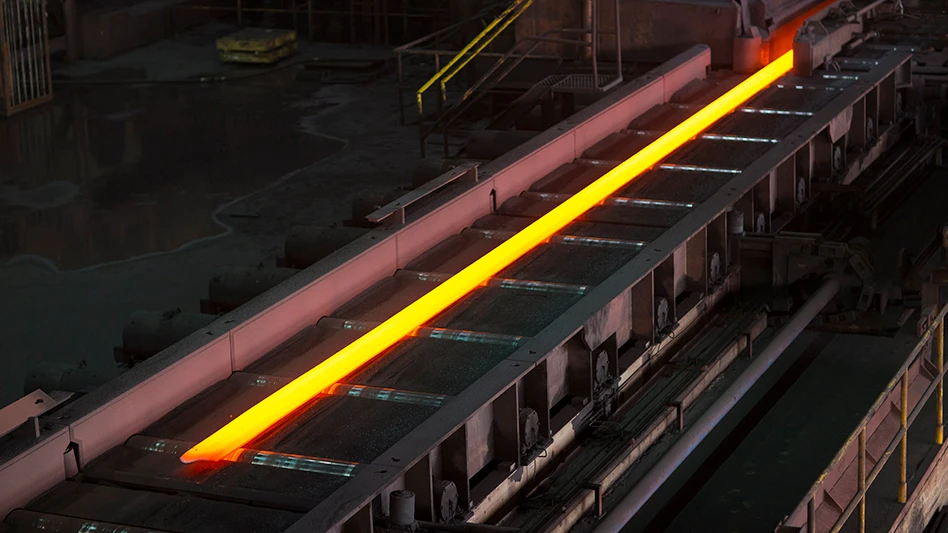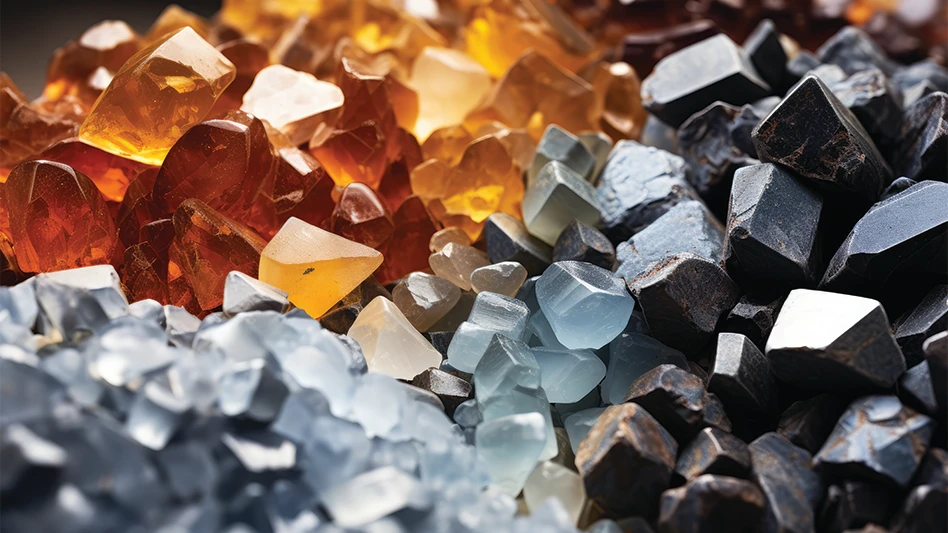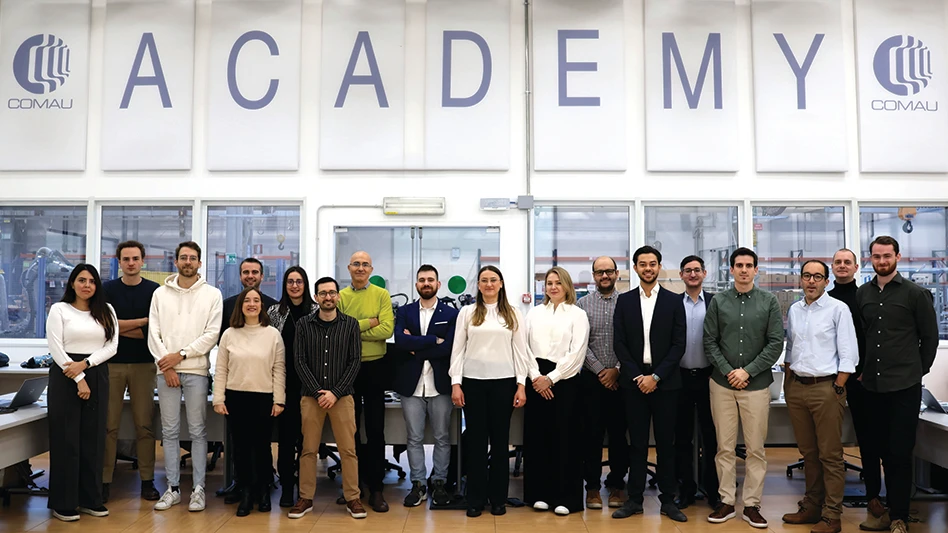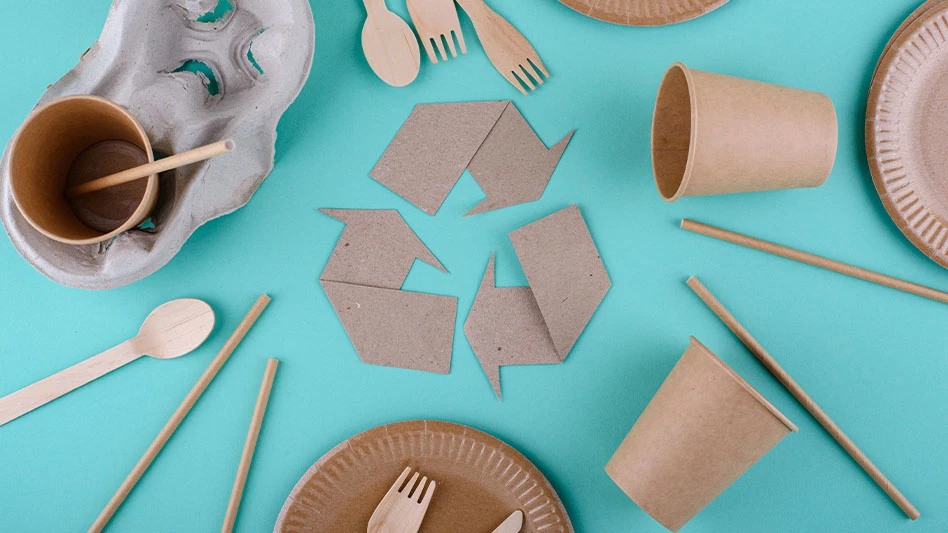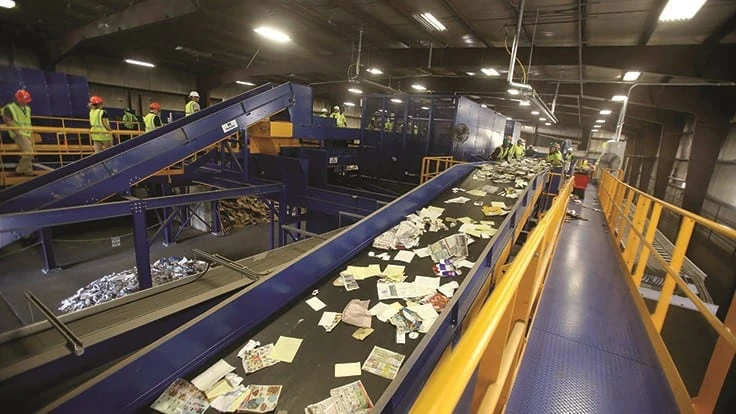
PDC Co.
If necessity is the mother of invention, it is easy to see why PDC Co. decided in December 2018 to make a substantial investment in its Area Recycling material recovery facility (MRF) based in Pekin, Illinois.
Like almost every other recycler operating in the U.S., Area Recycling was feeling the effects of China’s recently enacted National Sword policy that resulted in dwindling demand and lower commodity prices. However, Area Recycling was simultaneously suffering from another problem: the use of equipment that no longer suited the facility’s needs.
After Peoria, Illinois-based PDC took over the plant in 2015, the incoming material composition fundamentally changed, as PDC’s residential routes yielded a significantly higher concentration of glass than the site’s prior occupant. The influx of glass resulted in contaminated bales and damaged equipment. The problem got so bad that PDC Vice President Matt Coulter says the MRF was experiencing 50 percent downtime. Determined to rectify these issues, Coulter says the company made the decision to reinvest in its plant in a big way.
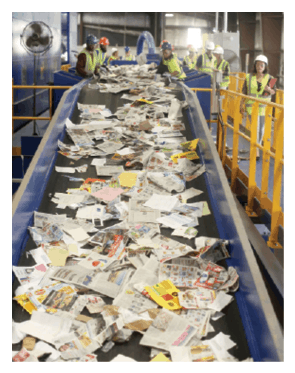
Taking over
PDC has served Illinois’ Tazewell County since 1928, steadily growing its environmental services collection and processing offerings over the years to include residential, commercial and industrial customers. Although the company owned and operated several landfills and transfer stations, a MRF wasn’t in its portfolio of assets. That’s why when PDC saw the opening to invest in Area Recycling in 2015, Coulter says the company jumped at the chance to integrate its services.
“In 2015, we were focused on waste collection. We had about 65 city contracts, so we controlled a lot of the volume out there. But at the time, we were using a different processor for recycling, so the purchase of Area Recycling allowed us to really become a fully integrated waste services company,” Coulter says. “Since we already did the hauling and we had the landfills, this allowed us to close the loop and process our own recycling.”
While the acquisition marked a pivotal moment for PDC and allowed it to better control costs, Coulter says the company quickly realized the site’s existing design wasn’t conducive for efficient production.
“When we bought this facility, the previous owners never accepted glass. They didn’t do a lot of volume and were very strict on prohibiting it. But when our company bought it, we had our city contracts we were servicing, and so glass contamination was common, yet the sorting equipment that was installed in 2006 wasn’t set up to process this. And when you introduce glass to a system that was not set up to take it, from a repair and maintenance standpoint, it becomes an upside-down operation. From the moment you introduce glass, it just destroys everything within the processing plant. The baler expense, paper screen expense, the belts—the glass tore up everything because there was no way to remove it. We knew we had to do something, and when the China ban threw everything in flux, the writing was on the wall.”
Making the investment
After soliciting a request for proposal (RFP) and speaking with several sorting system providers, PDC made the decision to partner with Quebec-based Machinex for a comprehensive overhaul. The system’s front-end design was outfitted with a Machinex MACH Triple Deck old corrugated containers (OCC) screen to reduce wrapping and improve cardboard recovery. PDC also decided on a MACH ballistic separator over a traditional disc screen to separate the fibers from containers. According to Coulter, the ballistic separator reduces maintenance for the operator because it doesn’t have exposed shafts for material to wrap around or rubber discs to replace.
The system upgrade also included a new metal separation system featuring an overbelt magnet for ferrous metals and a Machinex eddy current separator that allows PDC to recover aluminum cans from the recycling stream.
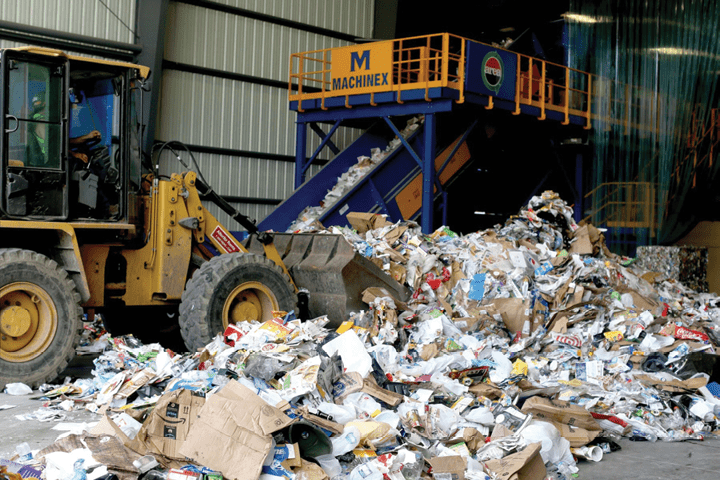
PDC also took the opportunity during the downtime required for the system integration to expand its facility by 8,000 square feet to make more room for the equipment and the higher volume of materials the company processed compared to the site’s predecessor.
The plant shut down in April of this year and reopened in June. According to Coulter, since reopening, the results have been like night and day.
“There have been a few pivotal changes we’ve seen since we upgraded the facility. Because of the fine screen, glass is immediately taken out of the facility and it’s put into a bunker outside. So, for the first three years of owning this facility, glass was within all the product that we had and it was tearing up the equipment. Having the glass removed was a big win for us,” he says. “The second biggest item for sure is the OCC screen, which we never had before. Our cardboard generation has increased probably 30 percent from what it used to be. Being able to remove our cardboard from our mixed paper has been a huge advantage for us. Another addition that was basic but impactful was the inclusion of the eddy current separator. Before, we never had an eddy current separator, so we were not pulling aluminum from the stream. Now, we’re able to collect this material and sell directly to mills on a monthly basis. And finally, we were not separating plastics prior to the upgrade. Thanks to the new ballistic separator, we can remove No. 1 and No. 2 plastics from the waste stream. We used to do a mix with plastics 1-7, which didn’t create much value. And today, we’ve three grades—the PET, the HDPE, and natural and colored plastics—that we’ve really generated some nice revenue from.”
Beyond having cleaner materials and more diversified recycling steams, Coulter says the facility upgrade has been instrumental in improving Area Recycling’s processing capacity. Before the retrofit, the facility processed roughly 6 tons per hour. That rate has now doubled, and Coulter says the system can be “easily upgraded” to process 18 tons per hour if needed.
Perhaps most importantly, the retrofit has allowed the company to reduce its downtime from approximately 50 percent to around 15-18 percent on average by weeding out the materials that were giving the system problems.

This has saved time and money on maintenance costs, Coulter says, but it has also allowed the company to revise its schedule to be more favorable for its staff of 15.
“We used to run five days a week, and now because of the improved efficiency, we’re able to do our maintenance on Mondays. This gives our staff a three-day-long weekend every week. We run hard Tuesday through Friday, but because they have that extra day off, they love that,” he says.
Future improvements
To keep up with the evolving nature of recycling markets, Coulter says PDC is already considering what upgrades to make next. He says he anticipates the company will invest in an optical sorter or two within the next couple of years as a way to reduce labor costs, get cleaner products and reclaim the commodities it is currently losing. He notes that while these upgrades don’t come cheap, they’re part of PDC’s goal to try to maximize the amount of materials the company recycles.
“Our overall investment on this project was around $3.5 million,” he says. “Any investment is big, especially in this industry and in Illinois, which is not the most business-friendly state these days, but we’re here for the long term. We’re a family-run business that has been here for 90 years, and we wanted to show an investment to the communities that we service and let them know that we’ve been here and we’re going to be here for a long time.”
This article originally appeared in the November/December issue of Waste Today. The author is the editor of Waste Today and can be contacted at aredling@gie.net.
Latest from Recycling Today
- Tenamec adds Virginia dealership
- Thyssenkrupp Steel announces site closure and job cuts
- Tennessee Tech receives $4.8M grant to improve EV battery recycling
- Don’t Trash Glass partners with glass suppliers in Colorado and Kentucky
- ICCA releases Plastic Additives Database
- EMR adds electric material handler to its Becker, Minnesota, operations
- Greenwave Technology pares back losses in Q3
- Lindner shredders prepare Brazilian plastic for recycling
